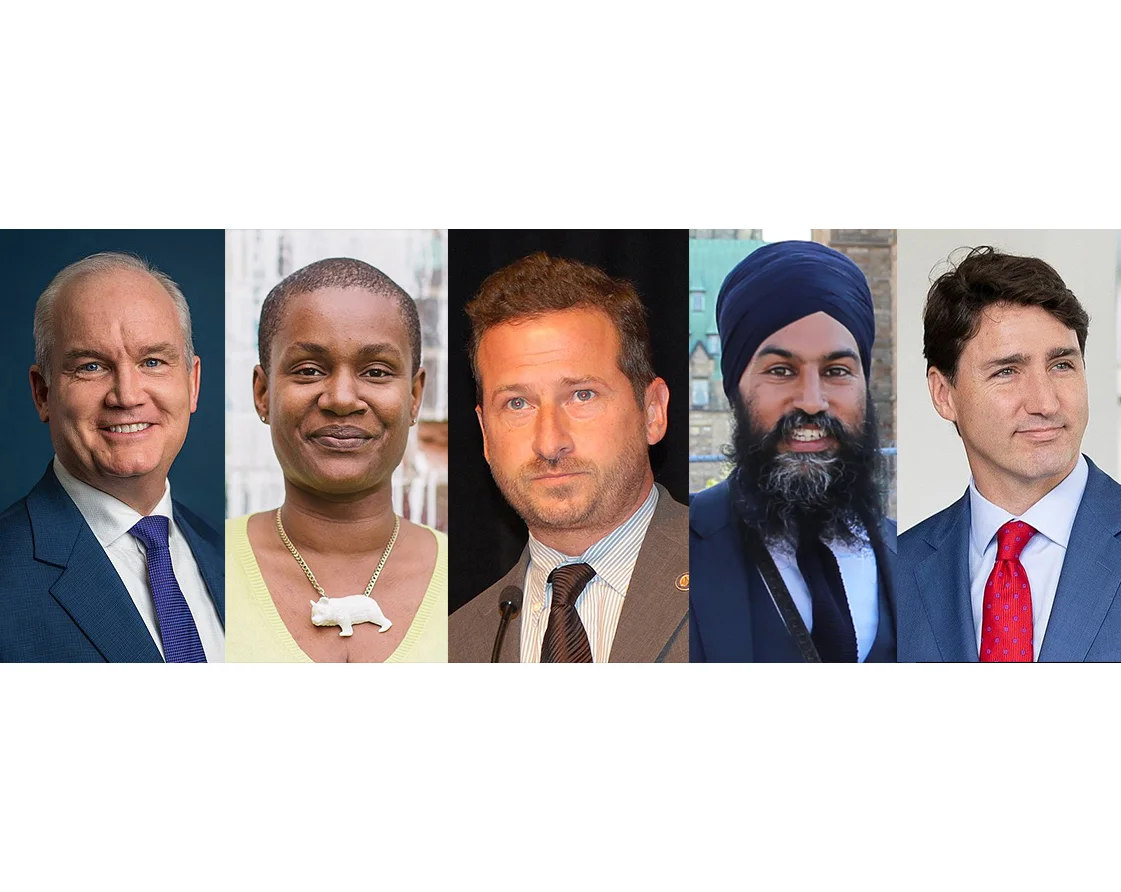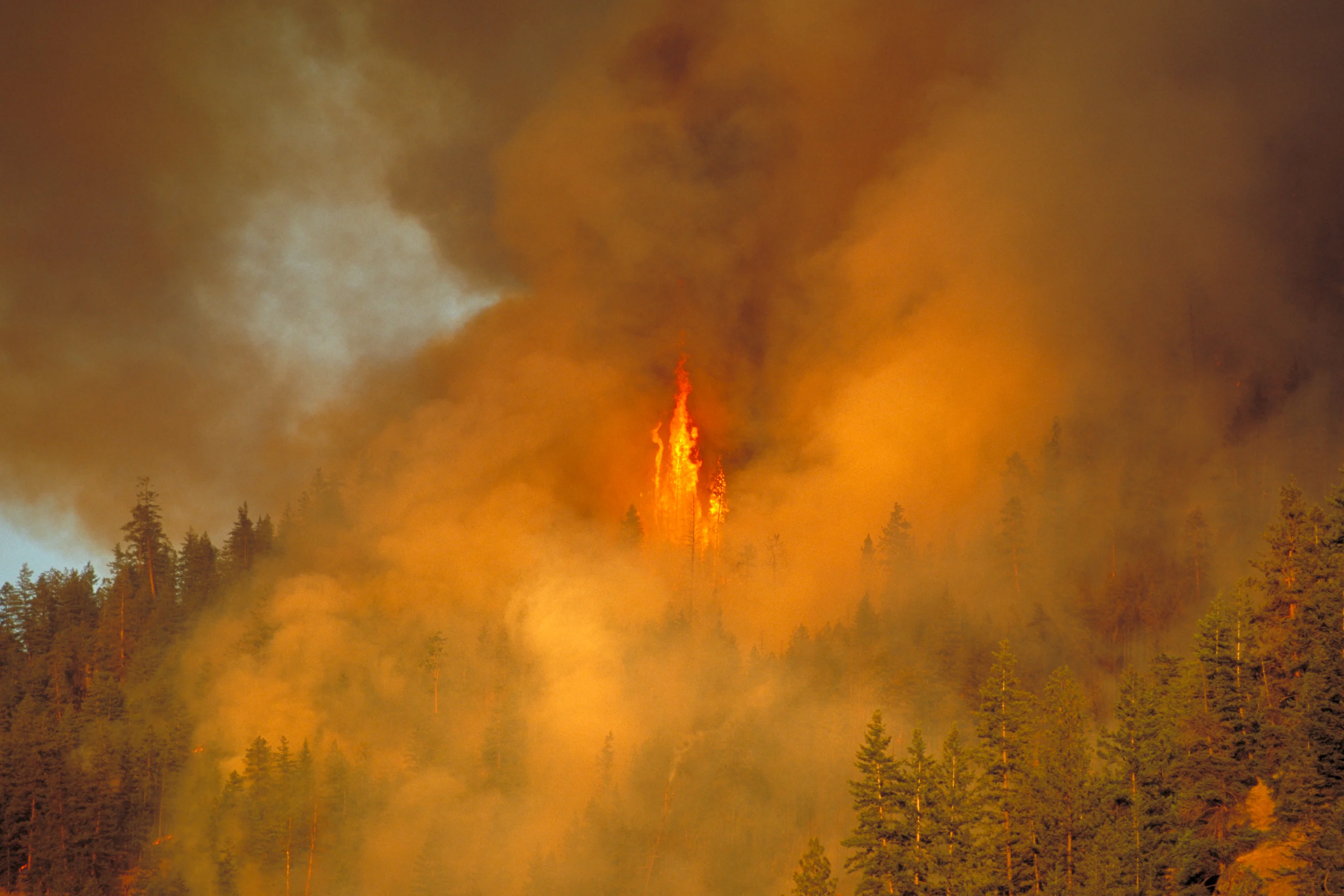
Sizing up each political party's climate change plan
As the federal election approaches, political parties address climate change in unprecedented ways, but which plan will keep warming below critical levels?
Canada’s recent extreme weather — wildfires, drought, floods — has killed hundreds of Canadians and destroyed homes and livelihoods, making climate action a top issue in this upcoming Federal election.
Polls consistently show a large majority of Canadians are very concerned about climate change. Political parties know this and have carbon emission reduction targets for 2030. What Canadians need to know is which party has a realistic, and cost-effective plan to reach a target that represents Canada’s fair share in the global effort to keep global warming below 2°C.
But first, there are four things to be aware of:
Canada has never met a climate target it set
Canada has never reduced its emissions, unlike many other countries, including the U.S. (Due to the pandemic emissions in every country declined in 2020)
Canada is 4th largest producer of oil and gas in the world and has one of the highest per person emissions at 19.4 tonnes
Oil and gas production, along with transportation, are responsible for more than half of Canada’s emissions and continue to increase

Extreme heat has been blamed for hundreds of excess deaths in Western Canada, and long-standing drought conditions have worsened wildfires, particularly in B.C. Pictured: A wildfire in Penticton, B.C. (cfarish/iStock/Getty Images Plus)
THE EXTREME WEATHER BIG PICTURE
Canada has largely avoided the extensive destruction from extreme weather, unlike the U.S. where one in three Americans experienced a weather disaster this summer according to the Washington Post. Just one storm, Hurricane Ida, devastated multiple states with damages estimated to be at least USD $95 billion (That’s close to half the amount Canada spends on healthcare annually). Europe’s flooding this summer cost more than USD $25 billion. There is no reason to think Canada is safe from these kinds of catastrophic events.
The latest report from the Intergovernmental Panel on Climate Change (IPCC) said it was an “established fact” that our carbon emissions have led to “increased frequency and/or intensity of some weather and climate extremes.” The IPCC has previously reported that to keep global temperatures from rising past 1.5°C requires a 45 per cent cut in global carbon emissions by 2030 and reach net zero by 2050.
CANADA FAILING TO PULL ITS WEIGHT
Canada’s emissions in 2019 (the most recent year data is available) are the same as they were in 2000. Twenty years of carbon reduction efforts including the closure of many coal plants have been offset by rising emissions from oil and gas production and transportation. Canada has not been pulling its weight to help prevent a global climate crisis.
Early in 2021, independent climate policy analysis by Navius Research Inc. in Vancouver confirmed that for the first time ever Canada had the policies and regulations to reach the 30 per cent reduction by 2030 target set by the Trudeau government in 2019.
Last April the Liberal government set a new target for Canada of 40-45 per cent reduction by 2030. It will be challenging, but it is the bare minimum. The U.S. target is 50 per cent while the European Union (E.U.) has a legally-binding target of 55 per cent. The EU target is a reduction compared to emissions in 1990, while the U.S. and Canada compare their emissions to those from 2005, a less challenging baseline.
The E.U. and the U.S. are investing hundreds of billions of dollars in clean energy and clean technology to reduce carbon emissions but also create an enormous job and economic boom. Canada is well-positioned to join in with the potential to create nearly 210,000 new jobs in the clean tech sector by 2030 according to a study by Clean Energy Canada. Over the same period of time, some 125,000 jobs will be lost in Canada’s fossil fuel sector as the need for oil and gas declines.
“Clean energy and clean tech is widely recognized as good economic policy,” says Merran Smith, executive director at Clean Energy Canada, a think tank based at Simon Fraser University.
IPCC REPORT: "CODE RED FOR HUMANITY"
TARGETS MEAN NOTHING WITHOUT POLICIES
Knowing how important climate action is to Canadians, each party has emission reduction targets for 2030. They are as follows: Conservatives 30 per cent; Liberals 40 per cent; NDP 50 per cent; Greens 60 per cent. However, as Canada’s climate history shows, targets are meaningless without the policies and regulations to reach them.
Simon Fraser University energy economist Mark Jaccard, has used Navius Research’s climate policy model to do an independent analysis of each party’s proposed plan to meet their targets. Jaccard has worked as an independent advisor for various governments for two decades. According to his analysis, the Liberals' target and plan is achievable and affordable. The Conservatives’ lower target is also achievable, however Jaccard says the party has a serious credibility problem when it comes to acting on climate change. The more ambitious NDP and Green targets would involve an enormous disruption to the economy and neither has a credible plan to achieve these objectives, he concludes.
Jaccard’s analysis focuses on the costs of climate action while failing to account for the “positive economic and employment impact of ambitious climate spending,” according to Seth Klein, a former director of the Canadian Centre for Policy Alternatives and author of A Good War: Mobilizing Canada for the Climate Emergency. Klein’s commentary in the National Observer goes on to say that Jaccard favours market-based policies and discounts the effectiveness of setting carbon budgets for various sectors and other approaches found in the NDP plan.
Clean Energy Canada’s Smith told The Weather Network that the Conservative climate plan would take Canada backwards in terms of its weaker target and focus on supporting continued growth of the fossil fuel sector. The NDP plan is similar in some ways to the Liberals such as requiring all new light-duty vehicles sold in 2035 be electric. The NDP is more ambitious in terms of its 50 per cent target and having a net zero electricity grid by 2030, whereas the Liberals aim for 2035. However, the NDP plan lacks details on how they would accomplish all this, according to Smith.
The NDP’s lack of details including costs is a problem, agrees Kathryn Harrison, a political scientist at University of British Columbia. It also relies heavily on regulatory action which usually takes years to put in place in Canada, Harrison said in an interview.
CONSERVATIVES STILL BULLISH ON BOOSTING OIL AND GAS PRODUCTION
The Conservative plan reveals they are still bullish on a bigger oil and gas sector and would revive the Northern Gateway pipeline to ship Alberta bitumen from Kitimat, B.C., according to Harrison. That flies in the face of the IPCC and International Energy Association’s assessments that investments to expand oil and gas must stop immediately.
There is a big contrast between the Conservative and Liberal climate plans, according to Harrison. That’s evident in the Liberal’s $2 billion “Futures Fund” to help fossil fuel workers and others in Alberta, Saskatchewan, and Newfoundland and Labrador make the transition to clean energy jobs. This is in addition to a $1.7-billion investment in skills development and retraining in the 2021 budget.
“That’s a big step forward,” Harrison said. The Liberals are acknowledging the reality that a poor-quality oil like Alberta bitumen will be the first to go in the global shift to clean energy, she explained.
After the election, the new Climate Accountability legislation will publicly call out the next government should it not be meeting its targets. And there will be mounting public pressure on the next government to keep their promises given the “hellish summer” many Canadians have experienced, Harrison said.
Thumbnail collage credit of each political leader (left to right): (Erin O'Toole/ Wikimedia Commons/ CC0 1.0) (Annamie Paul/ Wikimedia Commons/ CC BY-SA 4.0) (Mariannlï/ Wikimedia Commons/ CC BY-SA 2.0) (Yvonne Bambrick/ Wikimedia Commons/ CC BY-SA 2.0) (The White House/ Wikimedia Commons/ CC0 1.0)










